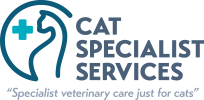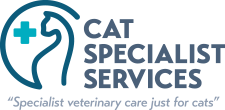The following is a discussion of treatments that are commonly used for a variety of feline conditions. All treatment options will be discussed with you by your feline clinician.

Treatments given in the hospital
Intravenous fluid therapy
- Intravenous fluid therapy is used in cats that are dehydrated, are losing fluid through diarrhoea, vomiting or not eating, or in cats with liver or kidney diseases amongst other causes.
- Sterile fluid is administered via a catheter that is placed into the vein. Prior to placing the intravenous catheter we apply a local anaesthetic cream. These catheters can also be used for administration of different medications such as anti-nausea medications or antibiotics.


Patient warming
- Sick cats and cats who are under anaesthesia can become cold very easily. We use patient warmers such as Bair Huggers which blow warm air onto the patient, heated cages and also warm packs to ensure patients stay warm.
Appetite stimulants
- Appetite stimulants such as mirtazapine maybe recommended for your cat. Please see the following information video here.
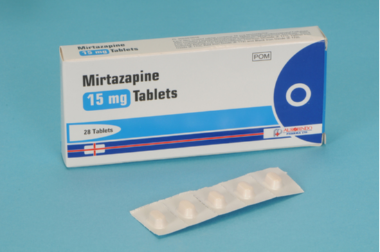
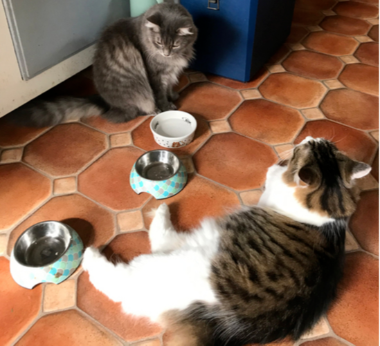
Anti-nausea medications
- Anti-nausea medications such as maropitant (Cerenia) are commonly used in the hospital in patients who are actively vomiting, or off their food. These maybe given via injection or oral tablet form.
Naso-oesophageal feeding tube
- A naso-oesophageal (NO) feeding tube is a very thin tube inserted into the nose and down to the oesophagus.
- A feeding tube should be considered in any cat that has not eaten for over three days as they may have severe metabolic abnormalities that can only be fixed by ensuring they are receiving sufficient nutrition. Force feeding by syringe feeding cats can have life threatening complications such as aspiration pneumonia and cats can also find it highly distressing.
- NO tubes are used to provide liquid nutrition for a short period of time (typically no more than three days).
- An NO tube does not require sedation or anaesthesia for placement or removal.

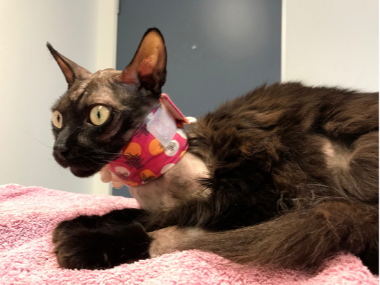
Oesophagostomy feeding tube
- Oesophagostomy tubes (O-tubes) are used frequently for cats that have not eaten for more than 3 days or cats who need long term medications but cannot be given tablets easily.
- A feeding tube should be considered in any cat that has not eaten for over three days as they may have severe metabolic abnormalities that can only be fixed by ensuring they are receiving sufficient nutrition. Force feeding by syringe feeding cats can have life threatening complications such as aspiration pneumonia and cats can also find it highly distressing.
- O tubes are placed via a short surgical procedure in the skin on the side of the neck, into the oesophagus. They are then stitched in place.
- Cats must be under anaesthesia to have an o tube placed.
- Tubes can be left in place for months if required and we will teach you how to use them at home.
- Risks are minimal but may include mild superficial skin infections around the insertion site or regurgitation.
- Cats are able to eat easily with the tube in place if they wish.
- Removal of the tube is very simple and does not require sedation or anaesthesia.
- Please see here for information on how to use and care for a feeding tube at home.
- Please see here for information on how to prepare the liquid diet for your cat.
Oxygen therapy
- Oxygen therapy is used in cats who are having breathing problems e.g. asthma, heart failure, tick paralysis.
- Cats are placed into a special oxygen chamber so that they can sit quietly and receiving high levels of oxygen without the use of a mask or tubing which they might find stressful.
- It is extremely important to minimise stress in cats with breathing difficulties as this will increase the amount of oxygen they are trying to use and could result in further deterioration. For this reason we might recommend your cat is sedated. Diagnostic investigations such as ultrasound or radiographs are also performed very slowly so as not to distress your cat.
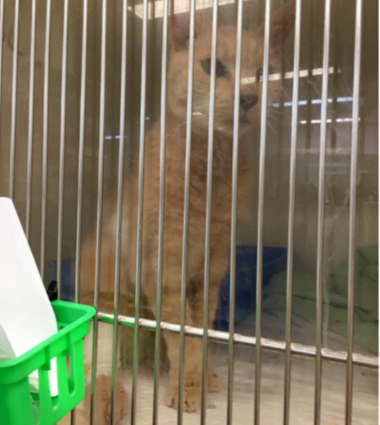

Nebulisation
- Nebulisation is the provision of inhalational steam therapy to a patient with either nasal discharge or lower airway disease.
- Sometimes medications such as antibiotics, or anti-inflammatories are given using this technique.
- We use special quiet, nebulising units sourced especially for cats.
- Also see here for the use of nebulisation at home.
- Quiet nebulisation units can be purchased from our hospital or online from THIS website
Inhalational therapy
- Inhalational therapy is using special chambers such as an Aerokat chamber to provide medications for cats with asthma or chronic nasal disease.
- Also see here for the use of inhalational chambers at home.

